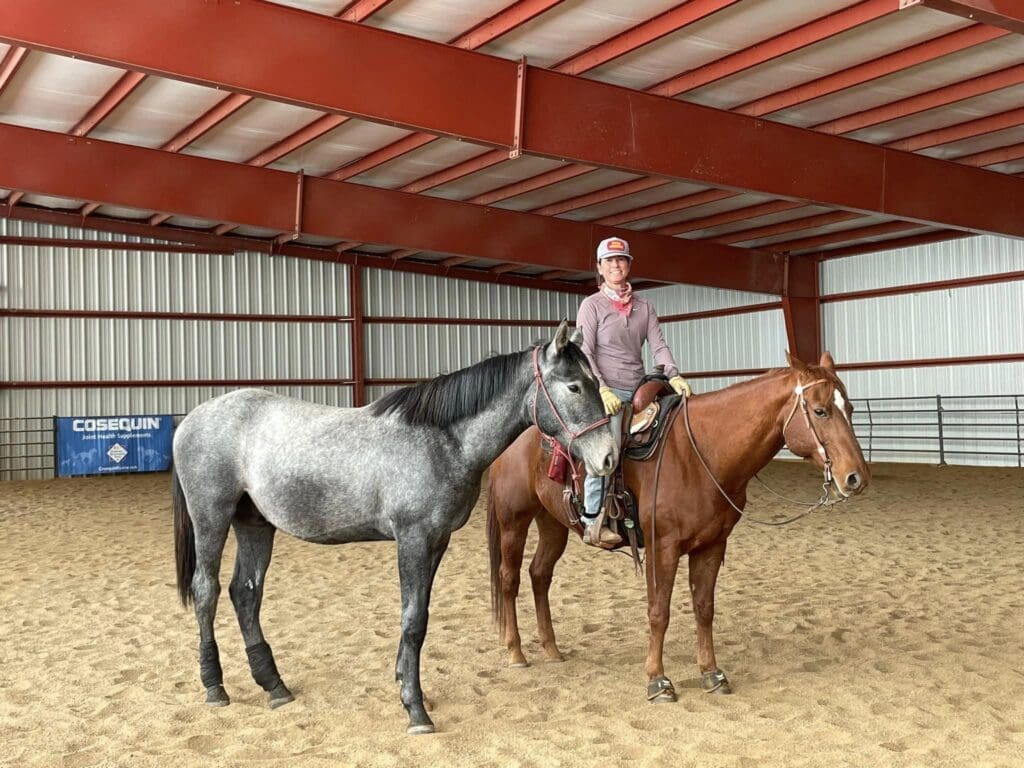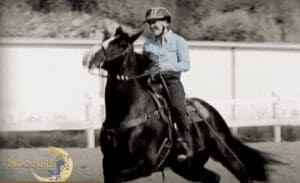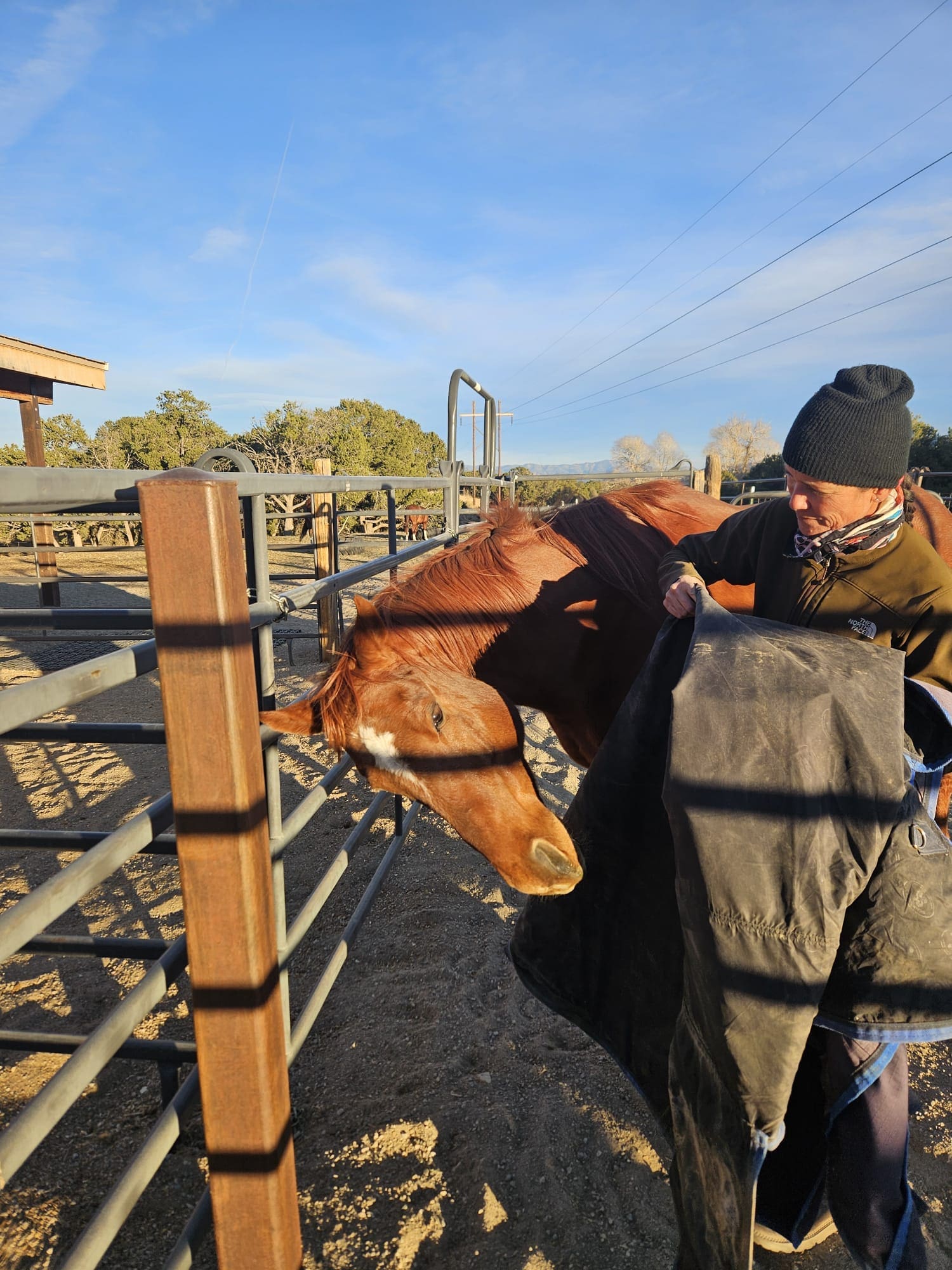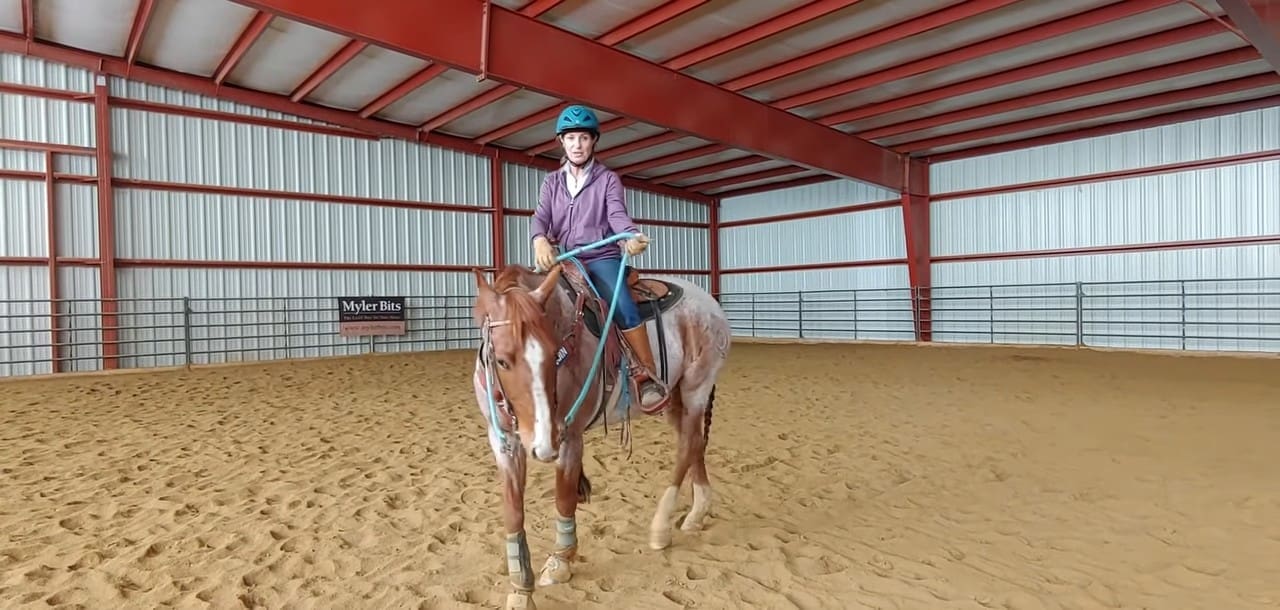
T. Cody investing time in the training of a long yearling sport horse.
This month, we’ve been working with a young warmblood, a long-yearling, to teach him basic handling skills. It’s been fascinating and gratifying to watch this young gelding learn to be a good boy and to help lay the foundation for his future success. His progress is a testament to the potential every young horse has, when the investment of quality training is made.
Finn, an Irish-bred sport horse, came to my ranch a few weeks ago for 30-days of ground training (no saddle training). My friend and protégé, T Cody, has been doing the footwork training this colt, while I’ve had fun watching, recording videos, making observations, and offering suggestions. Shall we say it’s an “immersive” experience for Finn, since he’s come to a new farm, with unknown horses and new humans, and having multiple short training sessions daily to learn good handling skills and manners.
It’s been an incredibly productive 30-days of training on this yearling, well before he is ready to start his under-saddle career. A few things stand out to me—training him to tie, load, be closed in, be comfortable riding in the horse trailer, and accepting new/unknown people and experiences with bravery and a positive mindset. These skills take time, patience, and practice to develop.
Horses only know how to be horses and for the most part, they do that quite well. However, learning how to be successful (desirable) in the human world often goes against their natural grain. For instance, we prefer horses that stand still, tolerate confinement and restraint, go forward when we ask, stop whenever we want, willingly leave the herd, and do not bite, strike, or kick us. Loading in a trailer and tolerating all manners of touching/prodding/probing is a bonus, and it would be great if he would ignore that inconvenient but instinctive flight response. But this is not the true nature of horses.
If riding horses that are already trained is your entire horsemanship experience, you may not realize that the things that you minimally expect your horse to do—like tie, lead, load, stand still, tolerate restraint, can go against the horse’s instincts. For some horses, it’s antithetical to their very existence (you mean I can’t run away whenever I want?).
Effectively training a horse in these seemingly simple skills takes time, appropriate facilities, and a specific skill-set for the trainer. As we taught these skills to this eager young sport horse, it occurred to me that many horse owners have no idea the amount of time, patience, and commitment involved in teaching basic ground skills to an uneducated horse of any age. Patience is a virtue in this training process and something that horse owners and trainers must cultivate.
These skills must be taught systematically by breaking the skills into the smallest steps and productively shaping the behavior. It takes time, consistency, and patience to teach a young or untrained horse these critical basic handling skills, which are the very foundation for his future success.
Investing in the training of a young horse, even before their under-saddle training, yields significant returns in terms of its safety, success, and desirability. A well-trained horse usually has a secure future ahead of him; he’s more desirable and therefore more valuable. A trained horse with good ground manners will be treated well by the people who handle him and have far less uncertainty in his lifetime. Most importantly, the horse is safer, not just for the people around it, but also in terms of having a secure home and a bright future.
Between the yearling sport horse “Finn,” and my weanling QH “Rip,” we have amassed a comprehensive (and growing) “Young Horse Training” series online in my Horse Master Academy. For a small glimpse into Finn’s training process, watch the free video below, where I show you “the most valuable 10 minutes of a young performance horse’s training.”



